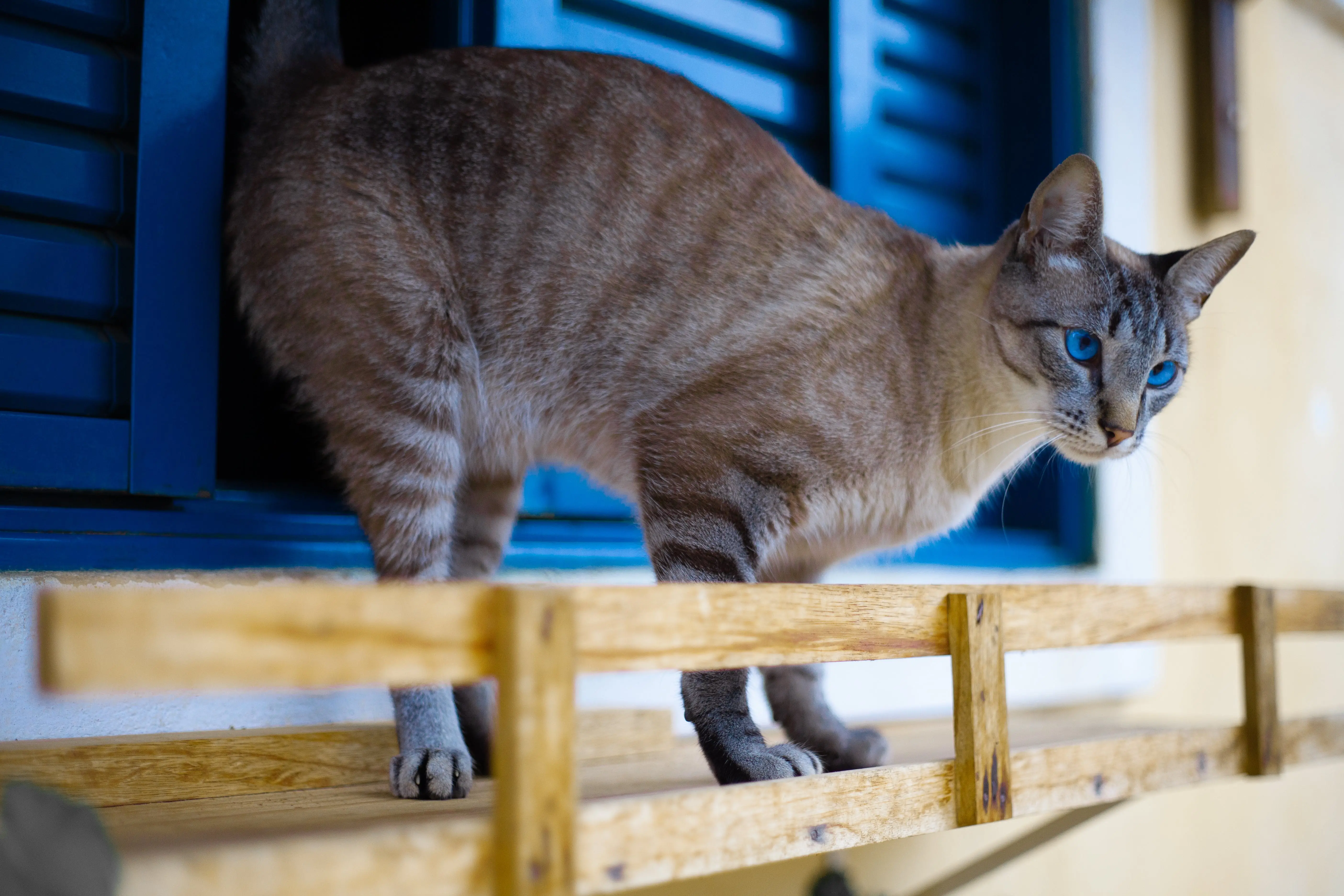- Get link
- X
- Other Apps
- Get link
- X
- Other Apps

Felines have captured the hearts of humans for centuries with their mysterious, agile, and independent nature. From domesticated house cats to majestic lions, the cat family is diverse and fascinating. In this article, we will delve into the world of the cat family and explore its characteristics, behavior, and relationship with humans.
What is The Cat Family?

The cat family, scientifically known as Felidae, is a biological family of carnivorous mammals that includes domestic cats, big cats, and wildcats. This family is further divided into two subfamilies: Pantherinae (big cats) and Felinae (small cats). With over 40 recognized species, the cat family is one of the most successful mammal families on earth.
Characteristics of The Cat Family
The members of the cat family share certain physical and behavioral characteristics that set them apart from other animals. Some notable features include:
- Sharp retractable claws for hunting and climbing
- Sensitive whiskers used for navigation and sensing prey
- Flexible spine and muscles for agility and speed
- Excellent sense of hearing and smell
- Unique color patterns and markings on fur
- Solitary and territorial nature
From the largest cat, the Siberian tiger, to the smallest, the rusty-spotted cat, each member of the cat family possesses these distinctive traits.
Behavior of The Cat Family
The behavior of the cat family varies depending on the species and environment. However, there are some common characteristics that can be observed in all cats, such as:
- Independent nature: Cats are not pack animals like dogs and prefer to live alone.
- Territorial instincts: Cats mark their territory using scent glands and will defend it from intruders.
- Hunting skills: All members of the cat family are expert hunters, and their sharp claws and teeth make them formidable predators.
- Grooming habits: Cats are known for their cleanliness and spend a significant amount of time grooming themselves.
- Social interaction: Despite their solitary nature, cats do form social bonds with other cats and humans.
How to Use The Cat Family?

The cat family has been domesticated and lived alongside humans for thousands of years. Today, they are one of the most popular pets, loved for their companionship and affectionate nature. If you are interested in bringing a feline companion into your home, here are some tips on how to use the cat family:
Choosing the Right Cat
Before adopting a cat, it is essential to research different breeds and their characteristics to find the best fit for your lifestyle. Some cats may be more suitable for families with children, while others prefer a quieter environment. Consider factors such as size, temperament, and grooming needs before making your decision.
Providing a Safe Environment
Cats are curious and agile creatures who love to explore their surroundings. It is important to cat-proof your home by removing any potential hazards such as toxic plants, small objects, and open windows. Providing a comfortable space for your cat to sleep, play, and relax is also crucial for their well-being.
Bonding with Your Cat
Building a strong bond with your cat requires patience, love, and understanding. Each cat has its unique personality, and it is essential to respect their boundaries and communicate through body language. Providing them with toys, treats, and attention will help strengthen the bond between you and your feline friend.
Examples of The Cat Family
The cat family is not limited to domesticated house cats; there are many fascinating examples of felines across the globe. Here are some members of the cat family that are unlike any other:
Jaguarundi (Felinae)
Found in the forests of Central and South America, the jaguarundi is a small wildcat with a long, slender body and short legs. Unlike other cats, their coat is uniform in color, ranging from dark brown to gray. They are excellent swimmers and have been known to hunt fish as well as small mammals.
Sand Cat (Felinae)
The sand cat is a unique species of feline that has evolved to live in the desert. With large eyes and ears, they are adapted to hunt at night and have thick fur and padded feet to protect them from the hot sand. These elusive cats are rarely seen, making them a mysterious and fascinating member of the cat family.
Asian Golden Cat (Felinae)
This medium-sized wildcat is found in the forests of Southeast Asia and is known for its stunning golden fur. They are skilled climbers and can leap great distances, making them efficient hunters in the dense jungle. Unfortunately, due to habitat loss and hunting, their numbers are declining, making them a vulnerable species.
Comparisons with The Cat Family
Cats have been domesticated for thousands of years, but they still retain many of their wild instincts. Here are some comparisons between domestic cats and their wild counterparts:
Social Interaction
Domestic cats have adapted to living with humans and often form strong bonds with their owners. However, they still retain their solitary nature and may not enjoy living with other cats. Wild cats, on the other hand, only form social bonds during mating season and prefer to live alone.
Hunting Habits
While domestic cats may hunt small prey such as mice or birds, they do not need to rely on hunting for survival. Wild cats, on the other hand, must hunt for food to survive. Their sharp claws, stealth, and agility make them highly effective hunters.
Environment
Domestic cats live in the safety and comfort of their owner's home, while wild cats roam free in their natural habitat. Domestic cats may face challenges adapting to the outside world, while wild cats may struggle with captivity.
Advices for The Cat Family
If you are considering adding a cat to your family, here are some tips to ensure a happy and healthy life for your feline companion:
- Provide proper nutrition: Cats require a balanced diet that includes protein, fat, vitamins, and minerals. Consult with a veterinarian to determine the best food for your cat's specific needs.
- Regular grooming: Cats are known for their hygiene, but they still require regular brushing and nail trimming to keep their coats and claws healthy.
- Visit the vet: Regular check-ups can help detect any health issues early on and prevent potential problems.
- Create a stimulating environment: Cats are curious and need mental and physical stimulation. Providing toys, scratching posts, and perches will keep them entertained and prevent destructive behavior.
- Show love and affection: While cats may not always show it, they do crave attention and affection. Spend quality time with your cat, and you will be rewarded with purring and headbutts.
Frequently Asked Questions about The Cat Family
What is the largest member of the cat family?
The largest member of the cat family is the Siberian tiger, with males weighing up to 660 pounds and reaching lengths of over 10 feet.
Can cats see in the dark?
Contrary to popular belief, cats cannot see in complete darkness. However, they have excellent night vision due to their large pupils and reflective layer behind their retina called the tapetum lucidum.
Do all cats like milk?
While cats are known for their love of milk, many are lactose intolerant and can experience digestive issues if given dairy products. It is best to stick to water or specialized cat milk as a treat.
Are black cats considered bad luck?
In some cultures, black cats are associated with bad luck, but this superstition is not based on any scientific evidence. Black cats are just as loving and loyal as any other cat.
Can cats be trained?
Cats can be trained through positive reinforcement, but they may not respond to training in the same way as dogs. They are independent animals, and their behavior cannot be controlled entirely like that of a dog.
Conclusion
The cat family is a diverse group of carnivorous mammals with unique characteristics and behavior. From domesticated house cats to wild big cats, these fascinating creatures have captured the hearts of humans for centuries. Understanding their needs and behaviors is crucial for providing them with a happy and fulfilling life as our companions. By following the tips and advice in this article, you can build a strong bond with your feline friend and appreciate the beauty and complexity of the cat family.
- Get link
- X
- Other Apps
family of kittens cats for families
Comments
Post a Comment